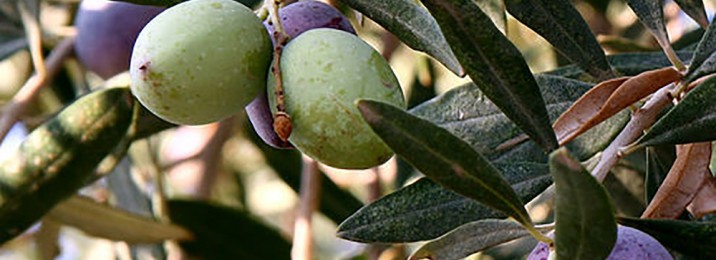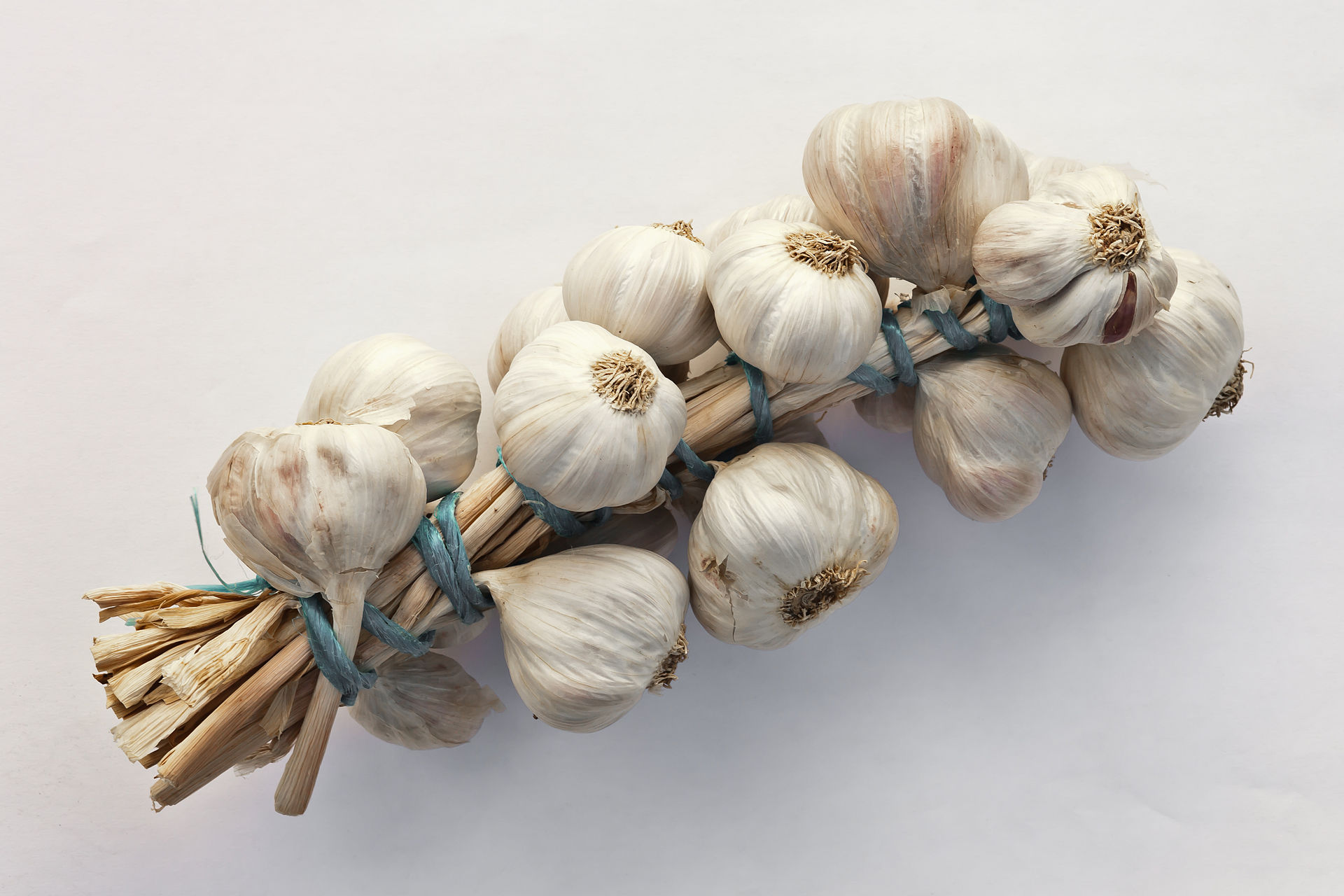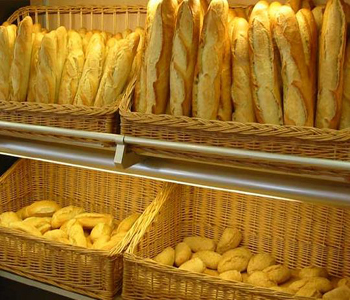Los necesitamos! Three flavours the Spanish just can’t live without
As rich and diverse as Spanish cuisine is, there are three ingredients which are just as crucial as those other mainstays, conversation and wine. These are the flavors the Spanish just cannot live without – aceite de oliva, ajo, and pan. Here are their stories.

Olive Oil 2007” by I, Alex Ex. Licensed under CC BY 2.5 via Wikimedia Commons.
Aceite de Oliva (olive oil)
Olive oil is one of those unmistakable oils that simply has no substitute. Its characteristic flavor, variously described as buttery and floral or woody and pungent, is unparalleled by any other oil.
It is also among the most ancient, with a deserved air of dignified nobility about it. While vegetable oil has come from a range of sources over the centuries (flax in the early days and, more recently, the rainforest-decimating palm plantations), olive oil has always come from olives!
Spain is the most prolific supplier of olive oil worldwide, producing almost three times as much as Italy in second place (2010). It’s easy to see why; right across the Iberian peninsula, olive trees are in abundance – hillside after hillside as far as the eye can see in some regions is covered with a shroud of uniform green stripes. Yet even on this mass industrial scale, the olive groves maintain a tranquil beauty about them.
Transforming the raw olives into the delicious golden oil is no crude exercise. Everything affects the resulting flavor, from the time at which they’re harvested to the way in which they’re processed. The greener the olive to begin with, the stronger the oil will taste, and if any heat is used in the pressing, much of the flavor (as well as the health benefit) is destroyed.
Historically, the plant was thought to have been brought to Spain by middle-eastern traders, and in fact the Spanish word for oil (aceite) comes from the Arabic al-zat. There is certainly a particular concentration of olive farming in Andalusia, the home of the Islamic Caliphate in the middle ages.
In modern Spain, olive oil is used in everything, from sauces and dressings to cakes and churros. It’s so abundant, in fact, that it’s even used over other kinds of cooking oil for deep-frying seafood in the battered Malaga style.
Ajo (garlic)
Supposed to have been brought to Spain from Asia over 5000 years ago, garlic is a plant of many culinary uses. Curiously, it comes from the same botanical family as the aloe vera plant, and is considered just as beneficial for curing all manner of ailments.
Nowadays, Spain grows more garlic than any other European country. To put that into perspective, this means more garlic even than those prodigious so-called garlic-eaters, the French and Italians!
There are a number of regional varieities in Spain. From the area around Madrid, the Chinchón is a white bulb with an extended tubular head and longer individual cloves. Being much stronger-tasting than other types of garlic, this is used sparingly in cooking.
The Chinese variety, ‘Sprint’, on the other hand, is chucked into just about everything – owing largely to the ease with which it is abundantly grown, even in arid regions such as Andalusia.
The garlic from Las Pedroñeras in La Mancha, which is protected by a designation of origin, tends to be larger than other varieties and is recognisable for its purple-skinned cloves. This type is particularly valued for its strong aroma and extended shelf-life, and it’s common to see it bunched together and hung up by string.
There aren’t many Spanish dishes in which garlic doesn’t have at least a supporting role, but ajoblanco (a white garlic soup made with almonds and olive oil) is one in which it most certainly is the star. Similarly, aioli, a sauce of garlic and olive oil with lemon juice and egg yolk, is especially popular in the north of Spain where it filtered into Catalan cuisine from France.
So popular is garlic in Spain, in fact, that there are festivals in every region to celebrate it. Two of the most famous are the one in Zamora (Castile y Leon), which is held in honour of San Pedro and sells over one million kilos of garlic every year, and the one in Chinchón (Madrid), which showcases garlic in all its varieties – raw, cooked, and processed into ice cream.
No meal is likely to be without bread in Spain. From lunch to tapas to the late evening meal, bread is absolutely everywhere (even on the tables of the average Chinese restaurant).
In fact, you’ll often find bread packed into the dishes we’ve already mentioned: crumbled into ajoblanco, used as a sturdy vehicle for the delicate aioli, and combined with olive oil in virtually all tapas imaginable.
It’s also used in desserts – for instance, the torrijas of Madrid are thick slices of bread dipped in egg and sugar before frying. These are essentially what we’d call French toast, except that the Spanish douse them with honey and sugared milk before serving.
The most common type of bread in Spain is the rustic barra de pan, which is usually broader than a normal baguette and is used widely for tapas, pintxos, and pa amb tomaquet.
Pan de molde, despite its somewhat off-putting name to English speakers, is simply the kind that’s most common in America – the basic rectangular loaf cooked in a tin or mold (molde).
Meanwhile, the more exciting, specialist and region-specific breads include the Galician rye (pan de centena), the large round Castillian hogaza, and the little pitanza (or pittance), a consecrated type of bread roll flung in its thousands from the town hall balcony in Librilla, Murcia, to memorialise the region’s historical drought and famine. There’s also the Boroña,a cornbread from Asturias baked in a cabbage leaf or “impregnated” by a sausage and, the clocha from Tarragona, a peasant bread hollowed out and packed with herrings, sardines, chopped onions, and roasted tomatoes… Oh, and some olive oil and garlic as well.




No comments
You can be the first one to leave a comment.